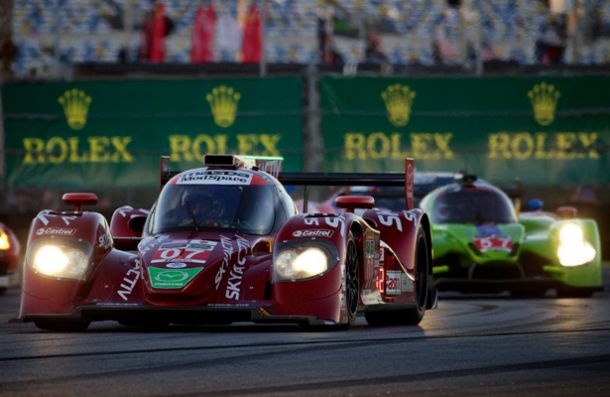Both the TUDOR United SportsCar Championship and FIA World Endurance Championship will be impacted by the ACO's decision of the four constructors that will be included in the Prototype and LMP2 categories come the 2017 racing season.
The Basics
After several P2 chassis manufacturers made a bid to be included in the selection of four constructors for the category in 2017, the ACO has finally made their decision. The constructors for the P2 category in 2017 will be Onroak Automotive, Oreca, Dallara, and Riley/Multimatic Technologies.
How They Were Chosen
These four chassis makers were selected according the following criteria:
• Experience and reputation;
• Industrial and engineering capacity, management of the supply chain;
• Financial situation;
• Investment devoted to the programme;
• Quality of the service to clientele;
• Constructors implanted in Europe and the United States with an undertaking to provide quality backup in Asia and throughout the world;
• Quality of the project and the car;
• Provisions of the project aimed at reducing running costs and the annual budget of the entrants.
Where Does IMSA Come In?
The TUDOR United SportsCar Championship, the heir of the American Le Mans Series and Grand-Am Rolex Sports Car Series, is impacted by this as well. The TUDOR Championship, in its sophomore year this season, will be running all P2 machinery in its flagship Prototype class in 2017, replacing the Daytona Prototypes that make up the majority of the category.
IMSA (United SportsCar) will have the same LMP2 cars competing in the WEC racing in their Prototype class - but with manufacturer-specific bodywork to give Chevrolet, Ford, Mazda and other potential joining manufacturers (Bentley displaying high interest in recent weeks) a reason to want to be involed with the biggest sports car class in North America.
What About Le Mans?
If teams and manufacturers from United SportsCar want to compete in the P2 class for the twice-around-the-clock classic, the 24 Hours of Le Mans, they would have to change the bodywork to keep parity with the WEC regulars. Competition between the yet-to-be announced P2-spec engine and the TUDOR Championship engines will be balanced with BoP (Balance of Performance) by the ACO. Also, TUDOR Championship engines should produce 600 horsepower too, although all engine regulations are not set yet.
An intrigiung story developing here, is the possibility for TUSC prototypes to compete in the European Le Mans Series with the exact same regulations.
Going Forward
The following is the timeline that manufacturers will follow to homologate their prototype cars of 2017:
• January 1, 2016: validation of the safety structures/monocoque
• April 1, 2016: validation of the bodywork and the mechanical components
• June 1, 2016: validation of the crash test
• September 1, 2017: presentation of the draft homologation sheet
• December 1-15, 2016: inspection and final validation of the car
The On-Track Impact
The cars under the new P2 regulations will make their competitive debut at the 2017 TUDOR United SportsCar Championship's Rolex 24 at Daytona season-opener at the famed Daytona International Speedway.
Because of the changes that will be made come 2017, next year will be the final racing season with more than four manufacturers involved, and it will also mark the final season that we witness the battle between IMSA's Daytona Prototypes and P2s, fighting for American sports car prestige.
Follow @VAVELSportsCar on Twitter for more regarding United SportsCar and the WEC.
David van den Boom is a writer for the VAVEL USA Racing section. Follow him on Twitter at @david__vdb.









































